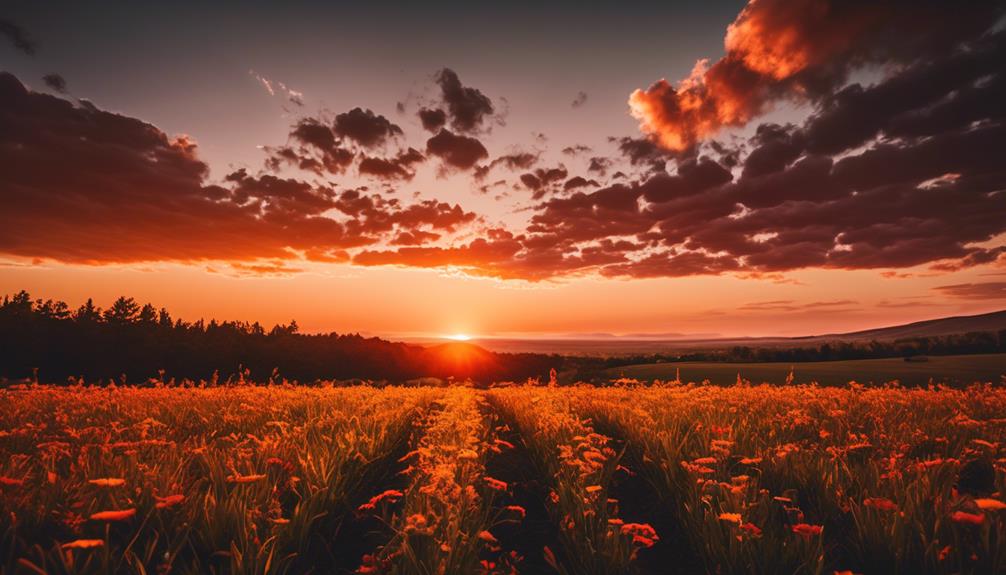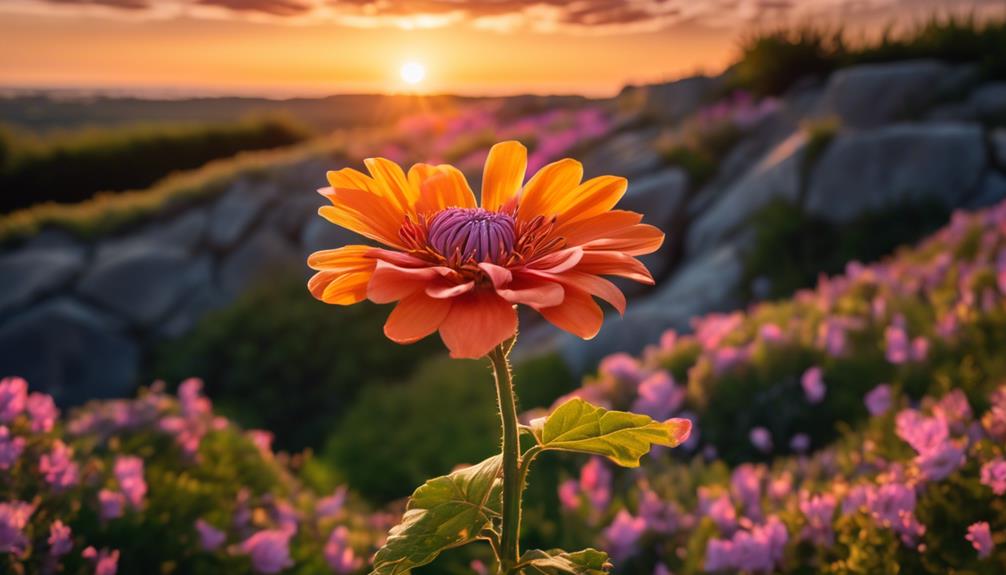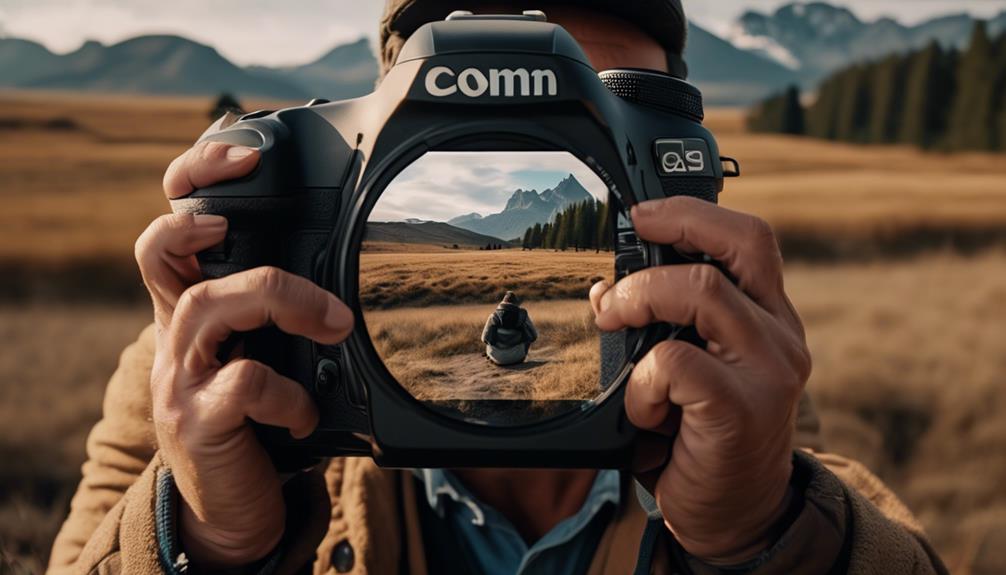Please note this post may contain affiliate links picked by me (Jay) that I have deemed may be of interest or relevant to you the reader of this.
These links do not affect the cost of the thing if you decide to purchase but i may get a little money if you choose to purchase.
For more information on my affiliate link policy click here.
As a photographer, I've always believed that capturing the perfect shot is like finding a needle in a haystack. It requires patience, skill, and a keen eye for detail.
But fear not, my fellow shutterbugs, for I have discovered four key rules that will elevate your photo quality to new heights. These rules, known as the Rule of Thirds, Leading Lines, Symmetry and Patterns, and Framing and Negative Space, are like secret weapons hidden in plain sight, waiting to be unleashed.
By mastering these techniques, you'll be able to transform your ordinary photos into extraordinary works of art. So, without further ado, let's dive into the world of visual storytelling and unlock the secrets that will take your photography to the next level.
Key Takeaways
- Rule of Thirds: Dividing the frame into a 3×3 grid and placing the main subject along the intersecting lines or intersections creates visually appealing compositions and adds balance and harmony to the image.
- Leading Lines: Using roads, pathways, architecture lines, or natural elements like rivers and tree branches can guide the viewer's eye towards the main subject, creating a sense of depth and perspective.
- Symmetry and Patterns: Capturing symmetrical scenes in nature and architecture, as well as repetitive patterns, adds elegance, order, rhythm, and movement to photos, creating a mesmerizing effect with the repetition of shapes, lines, or colors.
- Framing and Negative Space: Utilizing natural or man-made objects to frame the subject draws the viewer's eye towards it, while negative space can be used to create focus. Experimenting with different compositions helps achieve balance and proportion in photographs.
Rule of Thirds
To elevate the quality of your photos, one essential technique to master is the rule of thirds. This rule involves dividing your frame into a 3×3 grid, creating nine equal sections. The idea is to place your main subject or focal point along the intersecting lines or at their intersections. By doing so, you create a visually appealing composition that draws the viewer's attention to the subject.
The rule of thirds is based on the concept of the golden ratio, a mathematical ratio that has been used in art and design for centuries. This ratio is believed to create a sense of balance and harmony in an image. By aligning your subject with the grid lines or intersections, you create a more dynamic and interesting composition.
The rule of thirds is particularly useful when photographing landscapes, as it helps you create a sense of depth and balance. Placing the horizon along one of the horizontal grid lines, for example, can create a more visually pleasing composition.
But the rule of thirds isn't limited to landscapes. It can be applied to any type of photography, from portraits to still life. By placing your subject off-center, you create a more engaging and dynamic image.
Leading Lines
One powerful technique to enhance the visual impact of your photos is by utilizing leading lines. Leading lines are compositional elements that guide the viewer's eye towards the main subject of the photograph, creating a sense of depth and perspective. By incorporating leading lines into your images, you can instantly elevate the quality and creativity of your photos.
Here are four ways you can use leading lines to take your photography to the next level:
- Roads and pathways: Capture the viewer's attention by using a road or pathway as a leading line. This creates a sense of movement and invites the viewer to explore the image further.
- Architecture: Incorporating the lines and angles of buildings or other structures can create a visually striking composition. The lines can lead the viewer's eye towards the main subject and add depth to the image.
- Natural elements: Utilize natural elements such as rivers, streams, or tree branches to create leading lines that draw the viewer's eye towards the focal point. This adds a sense of tranquility and harmony to your composition.
- Shadows and light: Experiment with the way light interacts with your surroundings. Shadows can create interesting leading lines that add drama and depth to your photos.
Symmetry and Patterns
As we continue our exploration of enhancing photo quality, let's now dive into the captivating world of symmetry and patterns.
Abstract and minimalism, geometry and repetition – these are the elements that can take your photos to the next level of innovation and creativity.
Symmetry is a powerful tool that can create a sense of balance and harmony in your photographs. It can be found in nature, architecture, and even everyday objects. By capturing symmetrical scenes, you can create visually striking and captivating images. Whether it's the reflection of a mountain in a still lake or the perfectly aligned rows of a city skyline, symmetry adds a touch of elegance and order to your photos.
Patterns, on the other hand, can add depth and interest to your images. They can be found everywhere – in nature, in man-made structures, and even in the smallest details of everyday life. By capturing repetitive patterns, you can create a sense of rhythm and movement in your photos. The repetition of shapes, lines, or colors can create a mesmerizing effect that draws the viewer into the image.
To incorporate abstract and minimalism into your photography, look for simple and clean compositions. Focus on capturing the essence of your subject by eliminating any unnecessary distractions. Embrace negative space and use it to create a sense of calm and tranquility in your photos.
Framing and Negative Space
When it comes to elevating your photo quality, framing and negative space are two essential techniques that can greatly enhance the visual impact of your images. By mastering these composition techniques, you can create more balanced and proportioned photographs that capture the viewer's attention and leave a lasting impression.
Here are some tips to help you effectively utilize framing and negative space:
- Framing: Use natural elements or man-made objects to frame your subject and draw the viewer's eye towards it. This can be anything from a doorway, window, or branches of a tree. Experiment with different angles and perspectives to find the most captivating frame for your subject.
- Negative Space: Don't be afraid of empty spaces in your photographs. Negative space refers to the area around your subject that's intentionally left empty. This helps to create a sense of focus and allows your subject to stand out more. Play around with different compositions and experiment with how much negative space you include in your images.
- Balance: Achieving balance in your photographs is crucial for creating visually pleasing images. Consider the placement of your subject and any other elements in the frame. Try to distribute the visual weight evenly to avoid a lopsided or cluttered composition.
- Proportion: Pay attention to the size and scale of the elements in your image. Experiment with incorporating different sizes of objects to create interesting and dynamic compositions. Play with contrasts between large and small elements to add depth and visual interest.
Frequently Asked Questions
How Can I Effectively Use the Rule of Thirds to Create Visual Interest in My Photos?
To effectively use the rule of thirds in my photos, I focus on using it for landscape photography. By placing the main subject or points of interest along the gridlines or at their intersections, I create visual interest and balance in my composition.
Additionally, I incorporate leading lines to add depth and guide the viewer's eye through the image. This technique adds a dynamic element to my photos and enhances their overall quality.
What Are Some Common Mistakes to Avoid When Using Leading Lines in Photography?
When it comes to using leading lines in photography, there are a few common mistakes that can easily be avoided.
One of the biggest mistakes isn't paying attention to the composition of the photo. It's important to keep in mind that leading lines should guide the viewer's eye towards the main subject, so make sure they're leading towards something interesting.
Additionally, be mindful of any distracting elements that may intersect with the leading lines, as they can take away from the overall impact of the photo.
How Can I Incorporate Symmetry and Patterns Into My Photos to Make Them More Visually Appealing?
To make my photos more visually appealing, I love incorporating symmetry and patterns. They add a sense of balance and harmony to the composition.
I also like using color theory in photography to create a vibrant and eye-catching image. By playing with different hues and tones, I can evoke different emotions and moods.
Additionally, incorporating texture and depth in my photos adds an extra layer of interest and makes them more engaging to the viewer.
What Are Some Creative Ways to Use Framing and Negative Space in Photography?
When it comes to creative compositions and artistic techniques in photography, framing and negative space can make a big impact.
By using framing, I can guide the viewer's attention to the subject and create a sense of depth and context.
Negative space, on the other hand, allows me to emphasize the subject by surrounding it with empty space.
These techniques not only add visual interest and balance to the photo, but also give it a unique and innovative touch.
Can You Provide Examples of Famous Photographs That Successfully Utilize the Rule of Thirds, Leading Lines, Symmetry, and Framing?
Sure!
Famous photographs that successfully utilize the rule of thirds, leading lines, symmetry, and framing include:
- 'The Afghan Girl' by Steve McCurry
- 'Migrant Mother' by Dorothea Lange
- 'The Kiss' by Alfred Eisenstaedt
- 'The Starry Night' by Vincent van Gogh
These photographs have captivated audiences with their composition, drawing our eyes to the main subject, creating a sense of balance and harmony. They showcase the power of these key rules in elevating the overall quality and impact of a photograph.
Conclusion
In the world of photography, mastering the art of composition is the key to capturing stunning images.
By following the four key rules discussed in this article – the Rule of Thirds, Leading Lines, Symmetry and Patterns, and Framing and Negative Space – you can elevate the quality of your photos to new heights.
Think of these rules as the brushes and colors on your artistic palette, allowing you to create breathtaking masterpieces that will leave your audience in awe.
So go out there and let your creativity flow!


